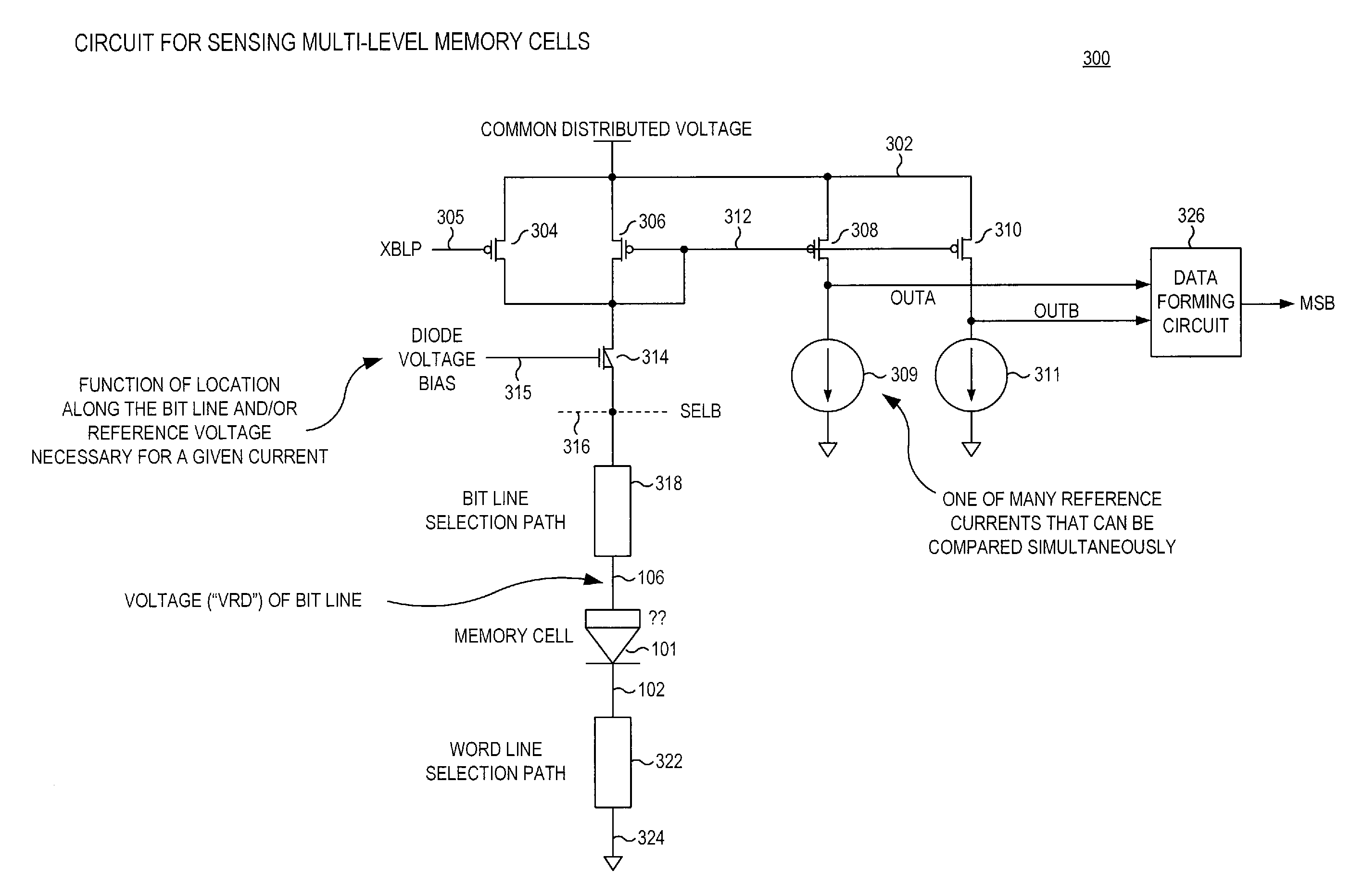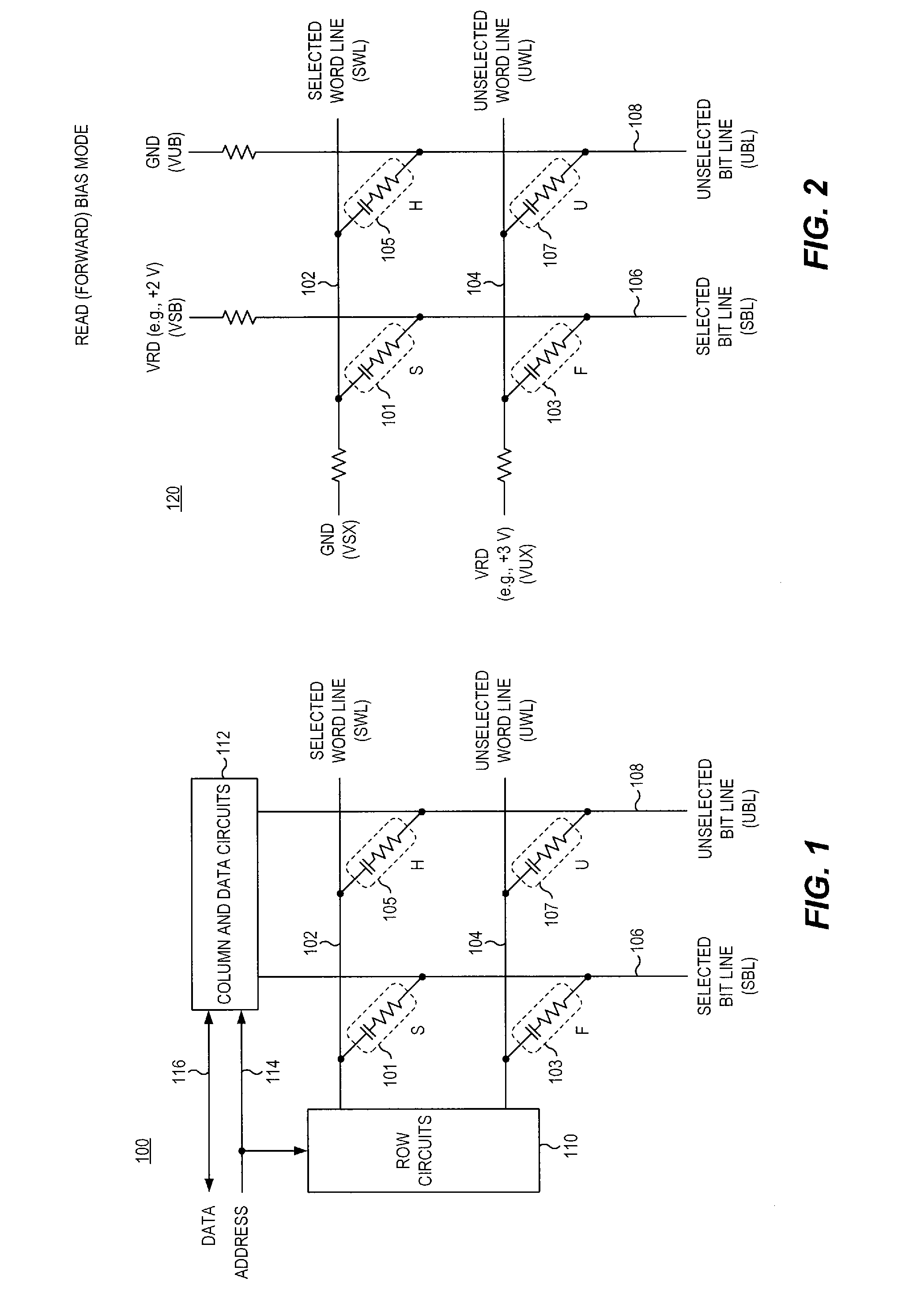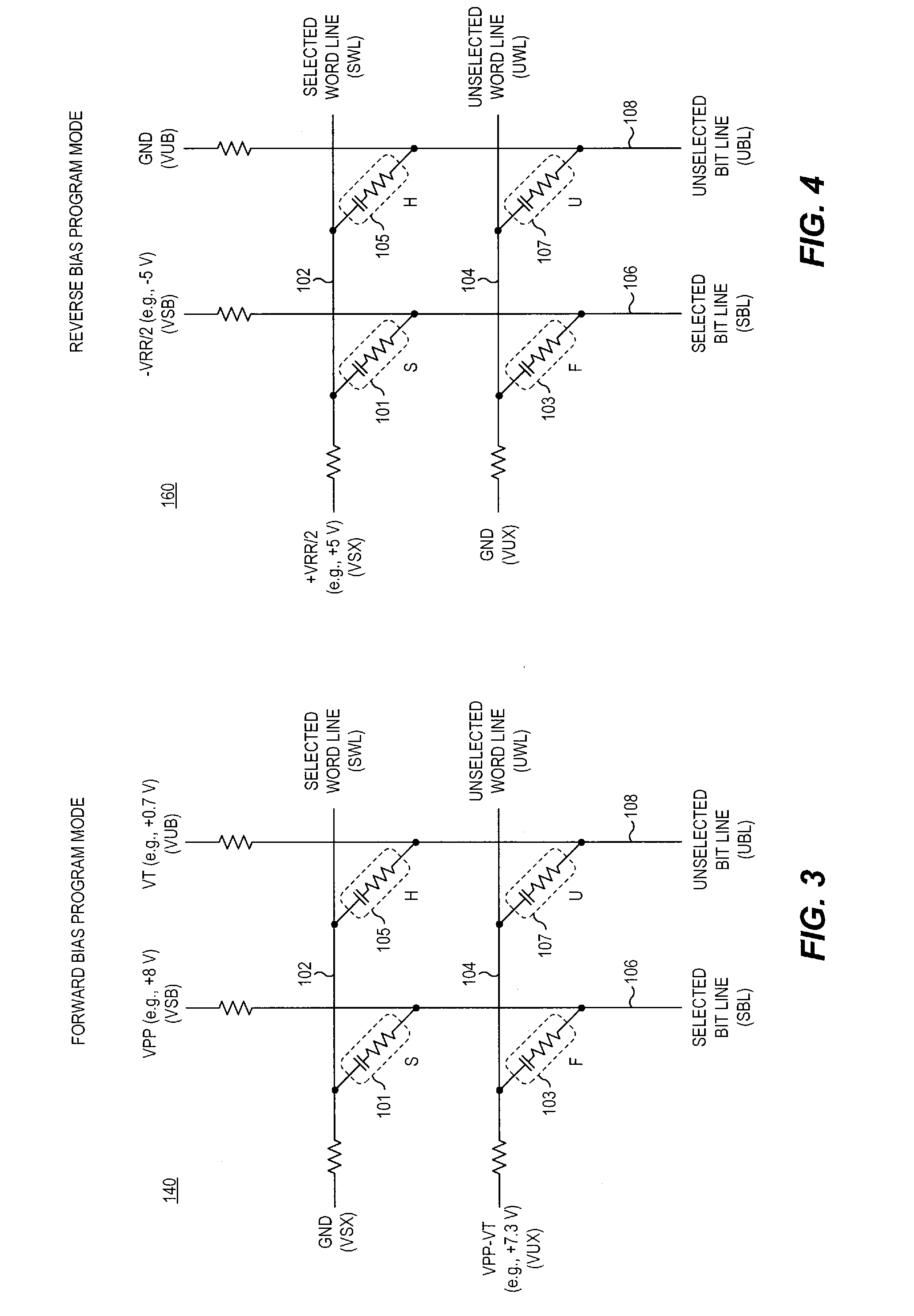Method for reading a multi-level passive element memory cell array
a memory cell array and multi-level technology, applied in static storage, digital storage, instruments, etc., can solve the problems of performance penalties and likely three long read cycles, and achieve the effect of decreasing resistance levels, decreasing resistance levels, and decreasing resistance levels
- Summary
- Abstract
- Description
- Claims
- Application Information
AI Technical Summary
Benefits of technology
Problems solved by technology
Method used
Image
Examples
Embodiment Construction
)
[0030]FIG. 1 is a schematic diagram of an exemplary passive element memory array 100. Two word lines 102, 104 are shown, as well as two bit lines 106, 108. Word line 102 is assumed to be a selected word line (SWL), and word line 104 is assumed to be an unselected word line (UWL). Similarly, bit line 106 is assumed to be a selected bit line (SBL), and bit line 108 is assumed to be an unselected bit line (UBL). Four passive element memory cells 101, 103, 105, 107 are shown, each coupled between an associated word line and an associated bit line.
[0031]Memory cell 101 is associated with the selected word line 102 and the selected bit line 106, and may be viewed as an “S” cell (i.e., “selected” cell). Memory cell 103 is associated with the unselected word line 104 and the selected bit line 106, and may be viewed as an “F” cell (i.e., “off” cell). Memory cell 105 is associated with the selected word line 102 and the unselected bit line 108, and may be viewed as an “H” cell (i.e., “half-s...
PUM
 Login to View More
Login to View More Abstract
Description
Claims
Application Information
 Login to View More
Login to View More - R&D
- Intellectual Property
- Life Sciences
- Materials
- Tech Scout
- Unparalleled Data Quality
- Higher Quality Content
- 60% Fewer Hallucinations
Browse by: Latest US Patents, China's latest patents, Technical Efficacy Thesaurus, Application Domain, Technology Topic, Popular Technical Reports.
© 2025 PatSnap. All rights reserved.Legal|Privacy policy|Modern Slavery Act Transparency Statement|Sitemap|About US| Contact US: help@patsnap.com



